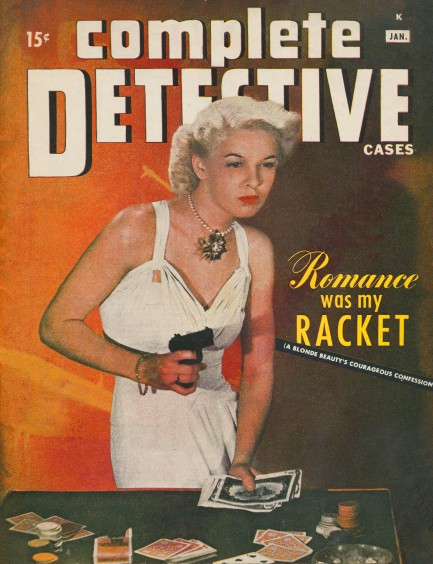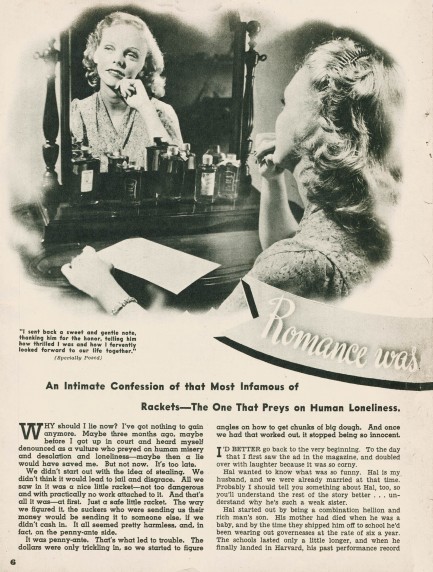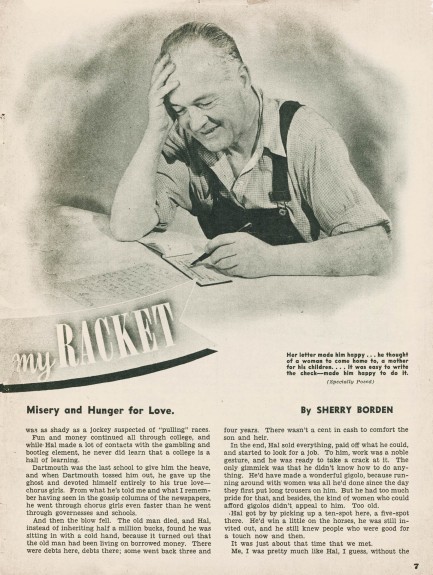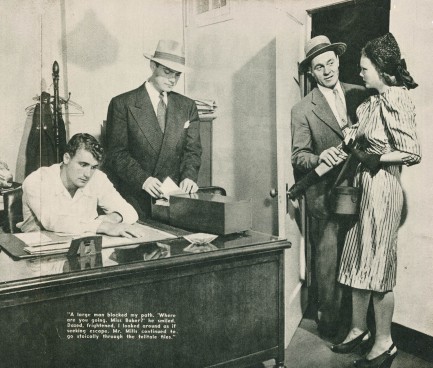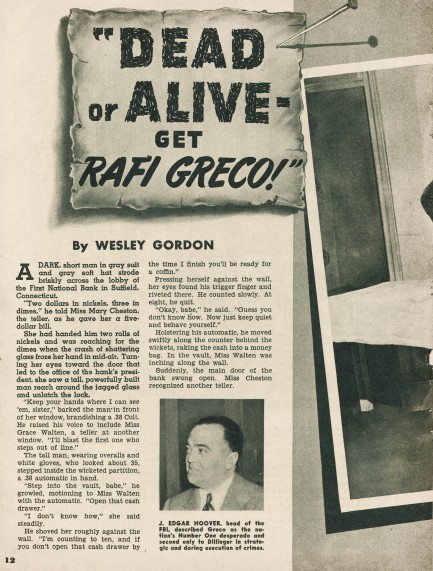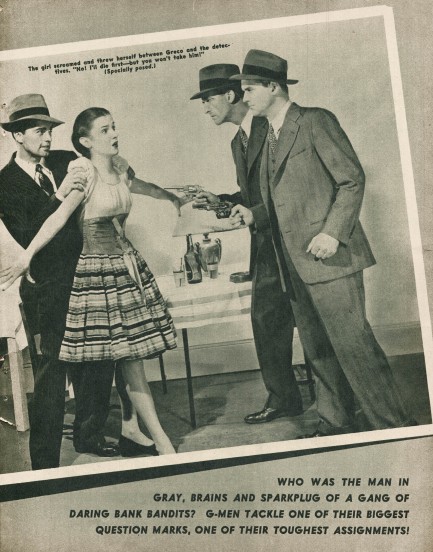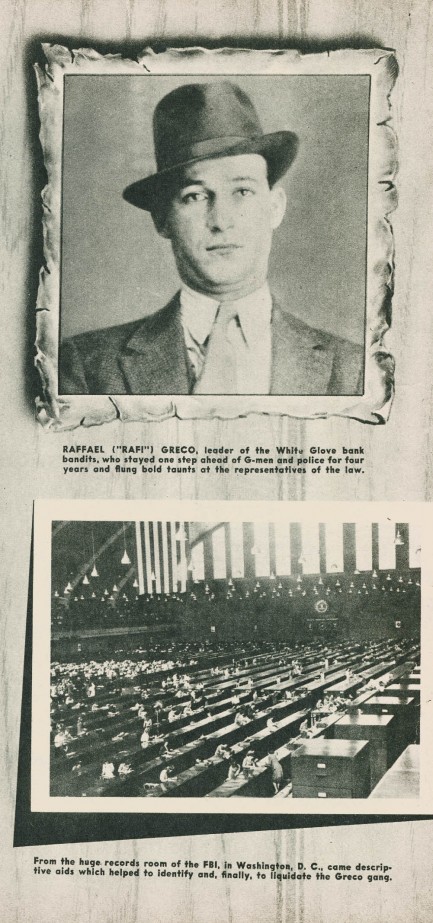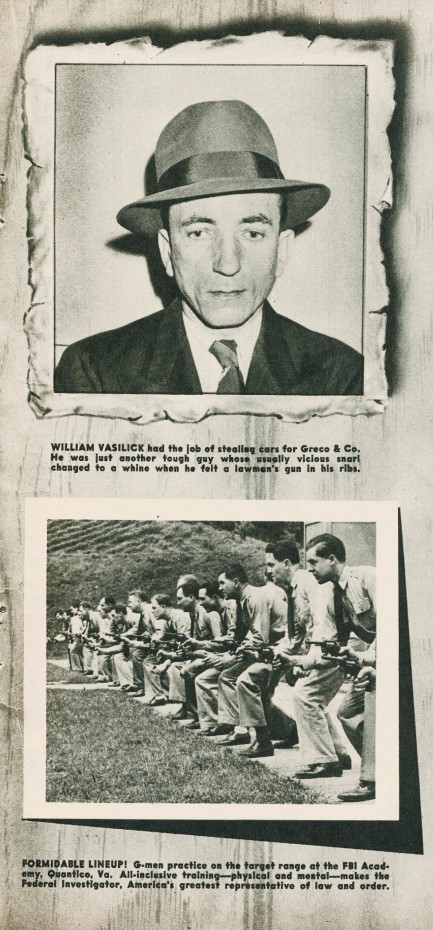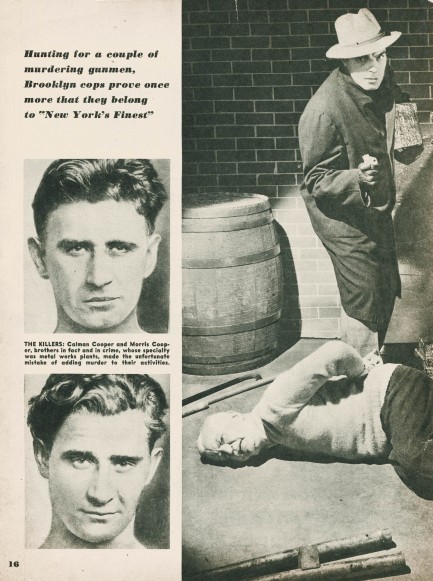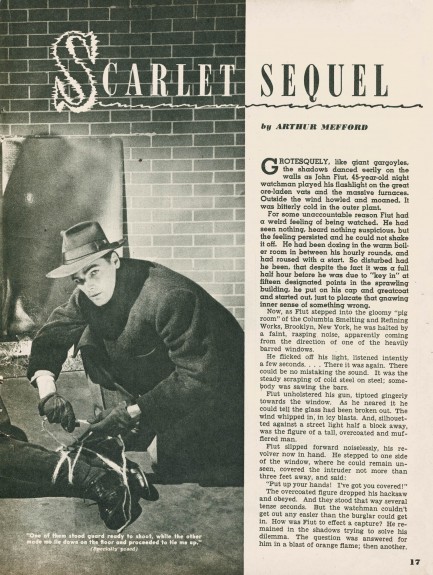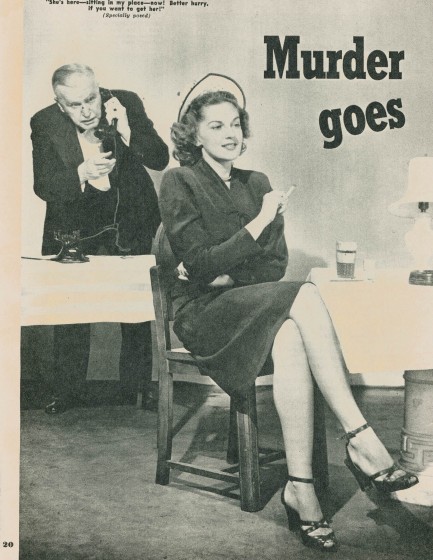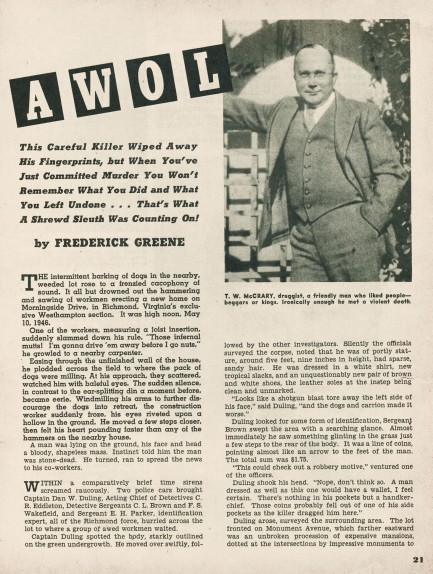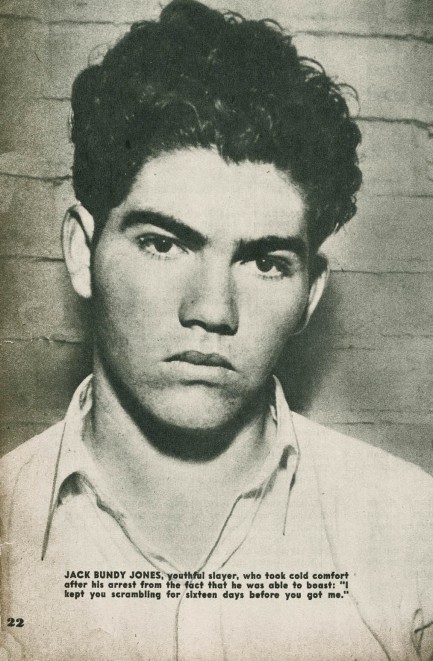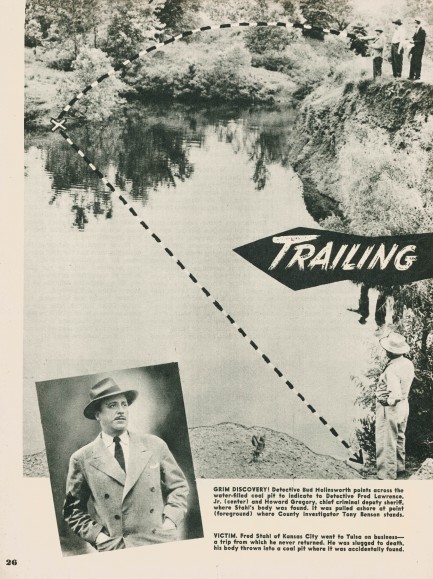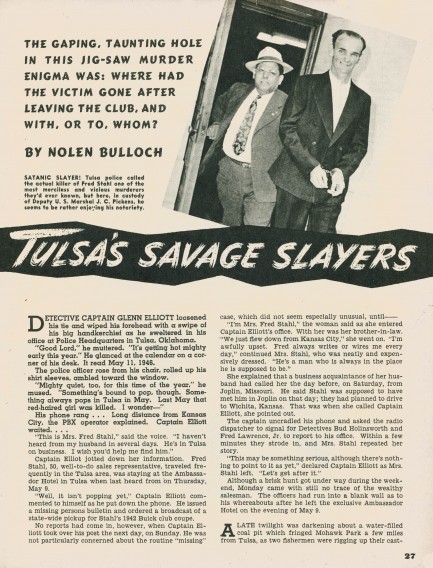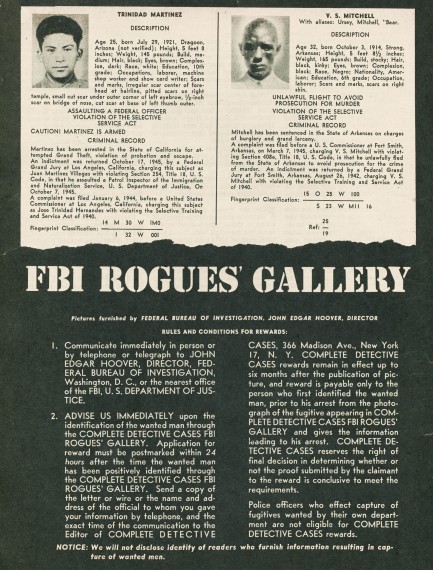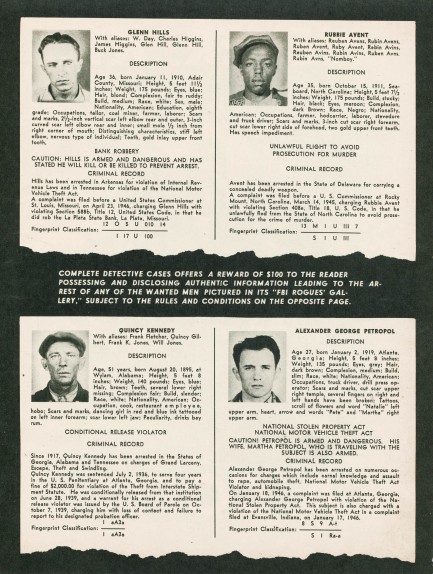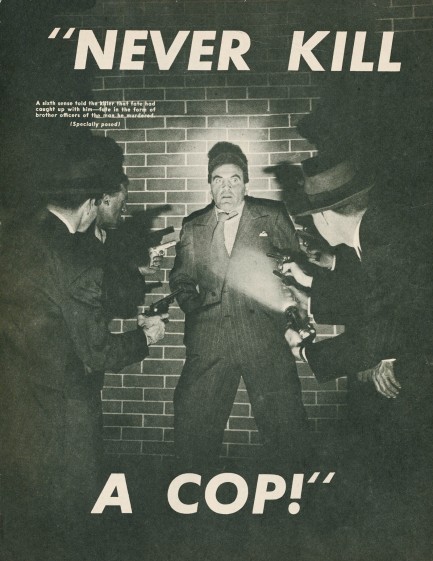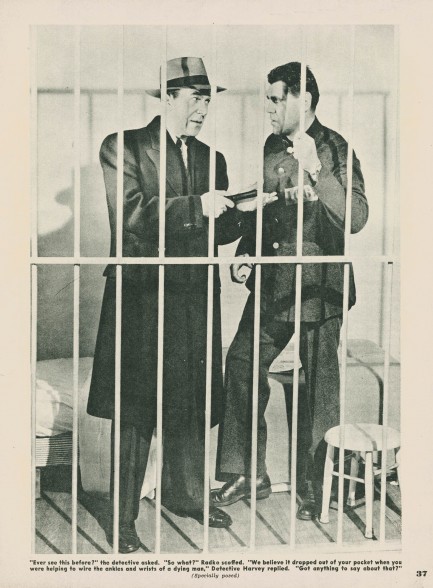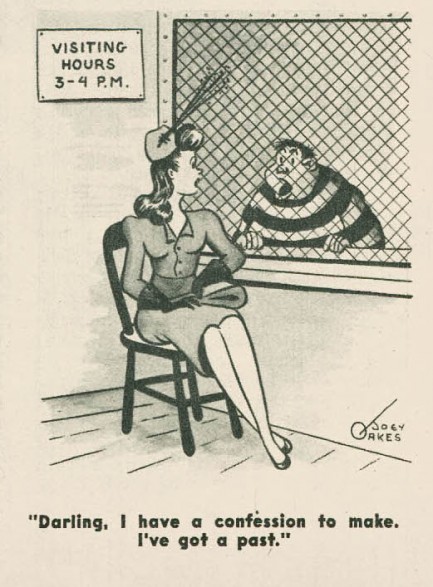 1959 flood thriller proves that even during a natural disaster money, booze, and women are all that matter. 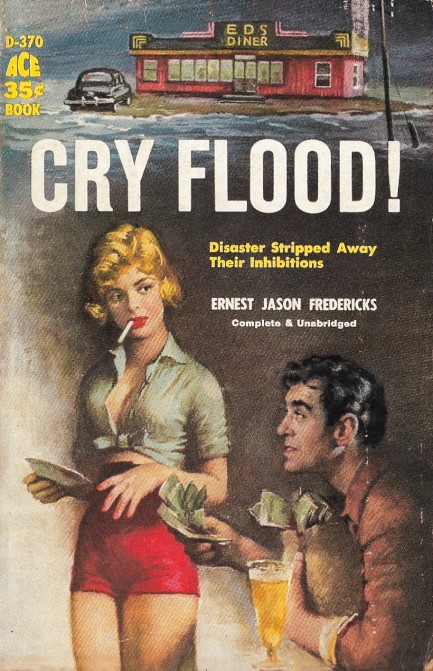
Ernest Jason Fredericks', aka Paul Ernst's 1959 novel Cry Flood!, for which see an Ace paperback edition above with nice art by George Ziel, is a thriller in the flood/hurricane sub-genre on which we've gotten hooked in recent years. We've read entires from John D. MacDonald, Theodore Pratt, Malcolm Douglas, and others. It seems as though the close quarters and ticking clock aspects built into disaster settings bring out the best in authors.
In Cry Flood! Fredericks sets the action in a New Jersey diner perched on high land as two hurricanes to the south and unseasonable rain in the region bring the nearby river to the record crest of a 1936 flood—then beyond. Converging on the diner are a bank-phobic miser carrying twenty-six thousand dollars, four married couples, and two criminals who catch wind of the money and intend to steal it. The problem is the flood waters rise too high for anyone to leave, which means the crooks must bide their time, prompting them to spend it terrorizing those with whom they're trapped.
In Fredericks' hands, the two bad men are synonymous with the flood, implacable and unavoidable, forcing the couples to face their fears and admit their failings before death sweeps them away. Or not—but only if they're brave and lucky. It was quite well done, and consistently enjoyable. For our money, the best of the flood/hurricane lot so far has been John and Ward Hawkins' A Girl, a River, and a Man, but Cry Flood! held its own in what has continued to be fertile pop fiction territory.
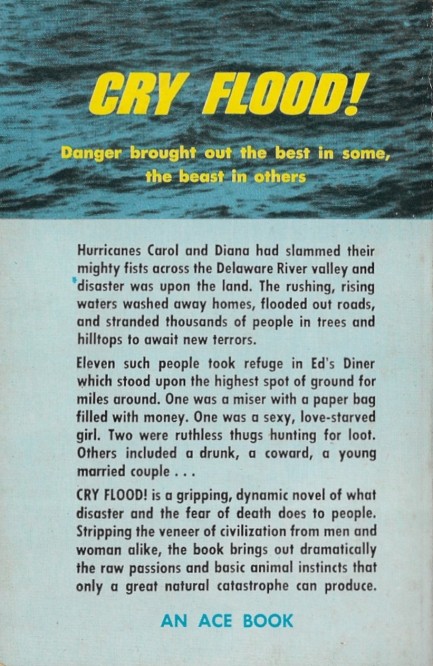
 Mature and Dors pair up for a bloc buster thriller. 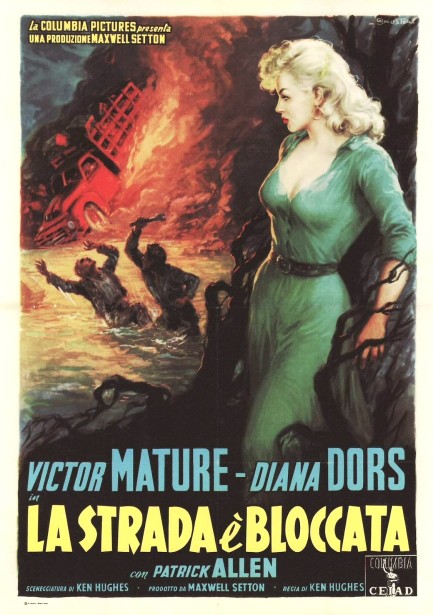
The 1957 Victor Mature/Diana Dors vehicle The Long Haul premiered in Italy today in 1958 as La strada è bloccata, which means “the road is blocked.” The art here is by Italian illustrator Anselmo Ballester. This is one of his better efforts, we think, with his Dors figure reflecting light from some off-canvas source, while a fire lights the background. You can see more from him here and here. As for the movie, we talked about it a while ago. You can read our thoughts here. And you can see a cool Japanese poster for the film here.
 The lawless of the jungle. 
The curious and certainly never-to-reappear style of movies referred today as women-in-prison, or WIP, is a subgenre of sexploitation cinema that came about for one reason: it used settings in which women were helpless. Well, in theory. The dramatic thrust of the plots always derived from attempts to retain dignity and to escape captivity. The protagonist was usually an odd woman out—an unjustly imprisoned victim or an undercover operative—surrounded by a mix of prisoners who were hopeless, cruel, sexually predatory, and complicit, plus the abusive guards, one of whom nearly always was a sadistic woman.
Hotel Paradis stars Anthony Steffen, Ajita Wilson, and the slinky Cristina Lay, sometimes referred to as Cristina Lai. There are numerous posters for it, but we like the above Danish effort featuring a fight to the death. Its text notes: This film is banned in many countries because of its strong scenes.... it's shown in Denmark in uncut version. Indeed. Interracial lesbian sex might be to blame for the banning. There are other possible reasons too. We won't waste our time trying to figure it out. As an aside, the movie was filmed concurrently with the WIP flick Femmine infernali using the same cast, director, and sets. So consider this a write-up of that movie too, since the pair are basically identical.
Plotwise, a group of women are being transported to a jungle hellhole prison where forced labor is used to dig for emeralds. When their guards are ambushed and killed by patriot soldiers seeking to steal the emeralds to fund a nebulous revolt, the women agree to continue posing  as prisoners in order to aid the infiltration of the camp. Behind bars is one inmate—Wilson—who has the shining or something, and keeps telling the others that violence, death, and freedom are coming. Also coming are WIP staples such as the evil wardenness, languorous shower scenes, whippings, baroque tortures, and sexual assault. It all ends pro forma with a climactic shootout. as prisoners in order to aid the infiltration of the camp. Behind bars is one inmate—Wilson—who has the shining or something, and keeps telling the others that violence, death, and freedom are coming. Also coming are WIP staples such as the evil wardenness, languorous shower scenes, whippings, baroque tortures, and sexual assault. It all ends pro forma with a climactic shootout.
Obviously, you have to go into these types of movies with a sense of humor if you can. When Lay first meets Wilson in the camp, she says, “My name's Maria. I'm frightened.” Why, oh why, didn't Wilson respond, “I'm Ajita. I'm a virgo”? Too bad we didn't write the script. Lay then helps herself to Wilson's pipe—which Wilson just a bit earlier had used to masturbate. If she can obtain a pipe you'd think she could get a dildo, but whatever, in prison you have to find your pleasures where you can. And in women-in-prison movies the same holds true—we thought the scene was hilarious. It was merely one of many.
It should be noted that while Wilson is the female lead, and we've shared a couple of racy images of her and highlighted her importance as a trans trailblazer, Lay is the audience draw here. She's unusually beautiful, and director Edoardo Mulargia and the movie's producers know it quite well. She gets the most loving camera work, the wettest shower scene, a nice interlude with Wilson, and goes through the entire final shootout obviously naked beneath her tattered prison tunic and with the top of it hanging wide open. It's not quite Frauen für Zellenblock 9, in which Karine Gambier and company perform their long escape sequence completely starkers, but it's notable just the same.
Hotel Paradis is obviously sexist and exploitative. As we've said before, in the same way blaxploitation movies usually show a racist power structure before the hero shatters it, sexploitation movies sometimes do the same with sexism. Sometimes. Not here. There are additional flaws. Compared to better WIP efforts it lacks the winking sense of humor, the empowerment undercurrent, and the sense of actors having fun while making something they know is ridiculous. There's a hardcore cut of this film with explicit scenes spliced in. It merely amplifies the aforementioned issues, so we suggest you avoid that version. But really, if you avoid Hotel Paradis entirely you'll probably be a better person for it. It premiered in Italy as Orinoco: Prigioniere del sesso in the autumn of 1980, and in Denmark today in 1983.         
 Liking this film will demand very hard work. 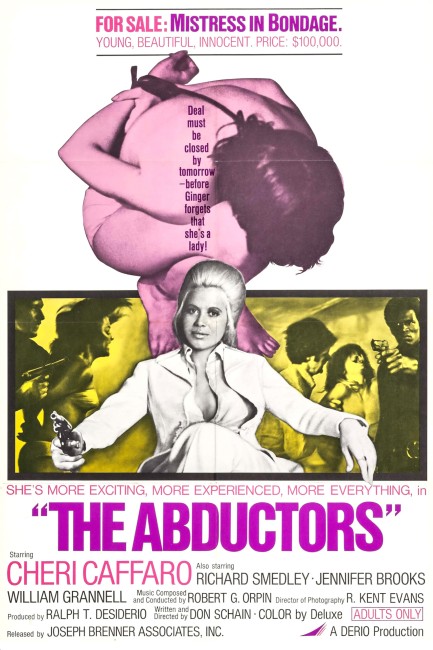
We're back to Cheri Caffaro quicker than you thought, finally taking a look at The Abductors, part of a trilogy of films, along with Ginger and Girls Are for Loving, in which she plays government agent Ginger McAllister. The character, who is no James Bond or Emma Peel (budget alone prevents that), usually lounges around sun-drenched climes, but occasionally is called in by her handler to deal with tough cases. This time she's needed to take down a sex trafficking ring. She recruits her pal Laurie Rose as bait, has her swallow a tracking chip, allows her to be kidnapped, and intends to follow her to the heart of the operation. But the plan doesn't quite work out—cut to Caffaro and Rose bound, gagged, and at the mercy of bad men.
Things look dire at that point. There's not much upside in being tied up in a basement in nothing but your panties. However Caffaro and Rose have two advantages. First, they both know karate or something. And second, they both love sex. They don't even have to fake it. These two can get off even with the flabbiest villains. And if their martial arts and sexual prowess don't bring down the crooks, they have outside help from an entire government funded crimefighting organization. In short—they'll be just fine. The movie is less so. In the end you can say about it exactly what you can say about the other two entries in the Ginger McAllister series: it's bad but interesting; it's surprisingly equal opportunity with its nudity; and it showcases a uniquely brave actress in Caffaro. The Abductors premiered today in 1972.
 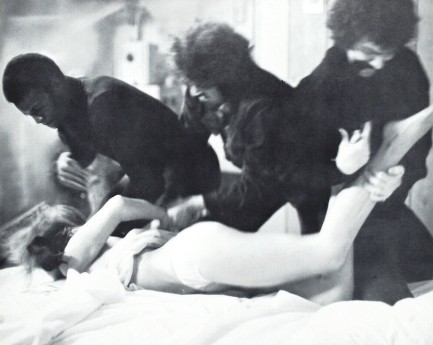    
 Jim Brown commits multiple instances of polizia brutality. 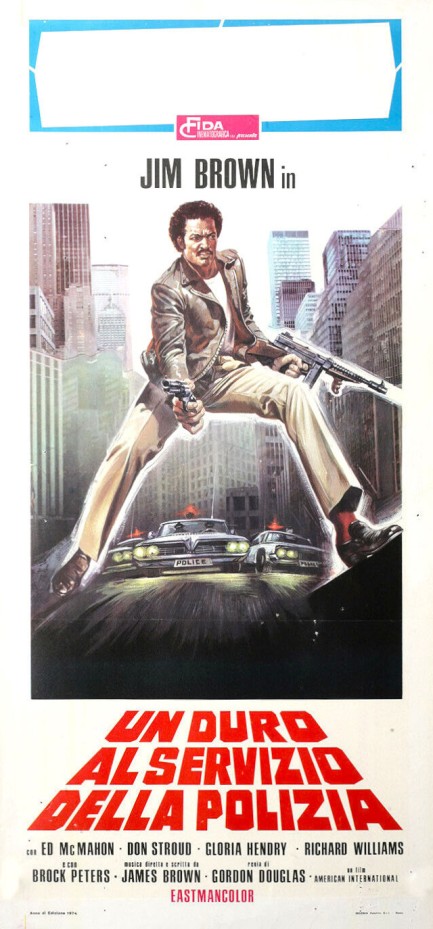
We never like to go very long without highlighting the blaxploitation cycle in cinema, so above you see a nice poster for the 1973 Jim Brown actioner Slaughter's Big Rip-Off, which was retitled Un duro al servizio della polizia for its Italian release. That translates as, “a tough guy in the police service,” which is fitting for Brown, one of the toughest guys around. It should be noted though, that he doesn't play a cop in the film, but a vigilante who partners with the cops. There's no Italian premiere date, but Rip-Off screened in most of Europe in 1974, so it's safe to say the same is true for Italy. We've seen it, but we'll return to the subject later after we have another look. In the meantime you can enjoy two Italian posters for 1972's Slaughter here.
 Life and death in the cinema. 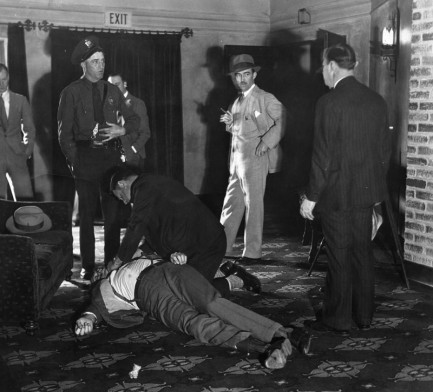
Police Lt. Hugh Crowley lies dead in the Fox Westwood Village Theater in Los Angeles after being shot today in 1932. Crowley had gone to the theater after closing time to retrieve box office receipts, but instead surprised two thieves. Crowley reached for his sidearm and fired, and one of the crooks gunned him down. Both men were captured and tried, and Joseph Francis Regan, who had fired the fatal shot and actually been hit in the abdomen by a bullet fired by Crowley, was sentenced to death. Jack Green, who had no prior criminal record, had not fired a shot, and had cooperated in the police investigation, nevertheless also was sentenced to death, probably because he had planned the crime. Regan was hanged at San Quentin State Prison in August 1933. Green came close to the gallows, but received numerous reprieves after public pleas for leniency from his parents, and rulings from higher courts. Eventually his sentence was commuted to life in prison.
Although Green was probably never aware of it, legal authorities often cited his case during the long battle over the constitutionality of the death penalty in California. The idea put forth by the pro-death penalty side around 1960 was that even though Green’s commuted sentence specified “without possibility of parole,” there was no actual reason in California jurisprudence or the state constitution that he could not be released. All that was required was for an appropriate state authority to decide to do it. They felt therefore that anti-death penalty campaigners’ assurances that criminals could be imprisoned for life if such punishment was deemed necessary meant nothing. No matter the language of the original life sentence, any criminal could later be released. Green doubtless would have found all this fascinating, but none of it ever came to affect him. As far as we can tell, he did in fact spend the rest of his life in San Quentin.
 Authors like Barbara Hoffman gave sleaze a new twist. 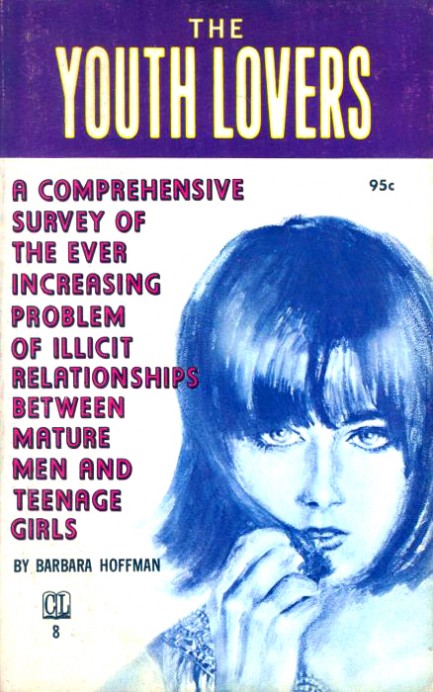
How do you make sleaze better? Pass it off as educational. During the 1960s, a time when sexual research was experiencing a bit of a—if you’ll excuse the expression—growth spurt, a subset of the sleaze market arose in which fictional clinical studies were passed off as serious scholarship. Barbara Hoffman was one of the go-to authors for this type of fiction, and wrote analyses such as The Baby Pros (a study of teenaged prostitution), The Adulteress (a report on unfaithful wives), Teenaged Seductress (a report on promiscuity among teenaged girls), and Woman Loves Boy (a study of older women’s relationships with teenaged boys).
Above you see her 1965 book The Youth Lovers from Classics Library, and it purports to document relationships between older men and teenaged girls. While some minimal research may have gone into efforts such as these, people bought them for the steamy details included in the phony case studies. Doctors were quoted to provide a gloss of legitimacy, but they too may have been fictional, and in fact, Barbara Hoffman herself never existed, but was a pen name for veteran sleaze author Russell Trainer, the man who gave the world The Lolita Complex and His Daughter's Friend. He's very collected by the vintage crowd, which means we may never have an opportunity to acquire one of his books. But we'll sure try.
 New from Jergens: ultra effective treatment for the body that lasts permanently. 
This promo image of Adele Jergens shows her in a considerably less cheerful mood than the last one we shared. It was made as a promo for her 1946 mystery-comedy The Corpse Came C.O.D. You don't hear her name mentioned as one of the great stars, but she was a Hollywood stalwart who appeared in a lot of movies—around sixty, if we count correctly. We'll be seeing her again shortly.
 Diamonds are forever, but Connery wasn’t. 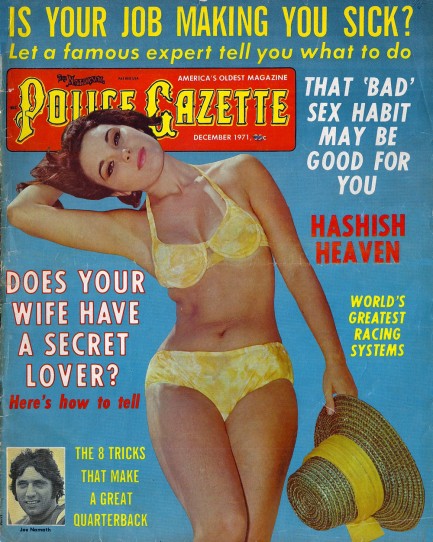
Sean Connery made as many appearances in sixties and seventies tabloids as just about any celeb of his time period, so here he is again in an article promoting his role in Diamonds Are Forever, which would premiere just a couple of weeks after this December 1971 National Police Gazette hit newsstands. we talked a bit about the source novel for the film, and author Ian Fleming's troubles with his publishers. It's interesting, so check here if you wish. In Gazette, Connery speaks of his futile struggle to portray James Bond as a balding hero, and quips about making his stylist thin his wigs so there was almost no point in wearing them at all. Connery said about Bond’s aging, “No one is immortal—not me, not you, and not James Bond.” It was a commendable sentiment, but naïve. Seems as though Connery didn’t realize United Artists had already branded Bond well beyond the point where the character was tethered to any concept of aging. The studio proved that when it brought the much younger Roger Moore on the scene for 1973’s Live and Let Die. Moore would later give way to Dalton, who gave way to Brosnan, who gave way to Craig, as Bond himself remained eternally forty-ish through the passing years. Elsewhere in the Gazette you get a report on the hash capital of the world, the world’s greatest racing systems, and the usual assortment of random beauties in bathing suits. All that, plus hashish toasted cheese, below.
  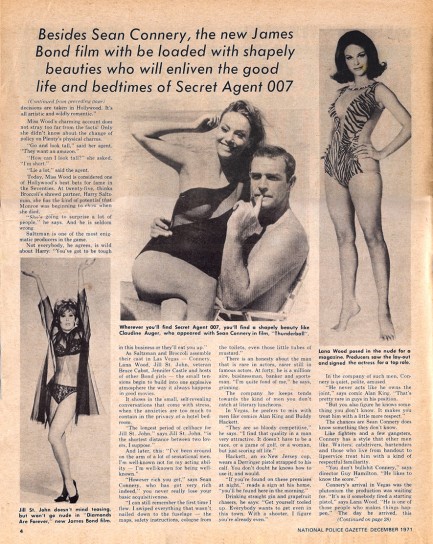     
 |  |
|
 |

The headlines that mattered yesteryear.
1926—Aimee Semple McPherson Disappears
In the U.S., Canadian born evangelist Aimee Semple McPherson disappears from Venice Beach, California in the middle of the afternoon. She is initially thought to have drowned, but on June 23, McPherson stumbles out of the desert in Agua Prieta, a Mexican town across the border from Douglas, Arizona, claiming to have been kidnapped, drugged, tortured and held for ransom in a shack by two people named Steve and Mexicali Rose. However, it soon becomes clear that McPherson's tale is fabricated, though to this day the reasons behind it remain unknown. 1964—Mods and Rockers Jailed After Riots
In Britain, scores of youths are jailed following a weekend of violent clashes between gangs of Mods and Rockers in Brighton and other south coast resorts. Mods listened to ska music and The Who, wore suits and rode Italian scooters, while Rockers listened to Elvis and Gene Vincent, and rode motorcycles. These differences triggered the violence. 1974—Police Raid SLA Headquarters
In the U.S., Los Angeles police raid the headquarters of the revolutionary group the Symbionese Liberation Army, resulting in the deaths of six members. The SLA had gained international notoriety by kidnapping nineteen-year old media heiress Patty Hearst from her Berkeley, California apartment, an act which precipitated her participation in an armed bank robbery. 1978—Charlie Chaplin's Missing Body Is Found
Eleven weeks after it was disinterred and stolen from a grave in Corsier near Lausanne, Switzerland, Charlie Chaplin's corpse is found by police. Two men—Roman Wardas, a 24-year-old Pole, and Gantscho Ganev, a 38-year-old Bulgarian—are convicted in December of stealing the coffin and trying to extort £400,000 from the Chaplin family. 1918—U.S. Congress Passes the Sedition Act
In the U.S., Congress passes a set of amendments to the Espionage Act called the Sedition Act, which makes "disloyal, profane, scurrilous, or abusive language" about the United States government, its flag, or its armed forces, as well as language that causes foreigners to view the American government or its institutions with contempt, an imprisonable offense. The Act specifically applies only during times of war, but later is pushed by politicians as a possible peacetime law, specifically to prevent political uprisings in African-American communities. But the Act is never extended and is repealed entirely in 1920.
|

|
|

It's easy. We have an uploader that makes it a snap. Use it to submit your art, text, header, and subhead. Your post can be funny, serious, or anything in between, as long as it's vintage pulp. You'll get a byline and experience the fleeting pride of free authorship. We'll edit your post for typos, but the rest is up to you. Click here to give us your best shot.

|
|








 as prisoners in order to aid the infiltration of the camp. Behind bars is one inmate—Wilson—who has the shining or something, and keeps telling the others that violence, death, and freedom are coming. Also coming are WIP staples such as the evil wardenness, languorous shower scenes, whippings, baroque tortures, and sexual assault. It all ends pro forma with a climactic shootout.
as prisoners in order to aid the infiltration of the camp. Behind bars is one inmate—Wilson—who has the shining or something, and keeps telling the others that violence, death, and freedom are coming. Also coming are WIP staples such as the evil wardenness, languorous shower scenes, whippings, baroque tortures, and sexual assault. It all ends pro forma with a climactic shootout.


















